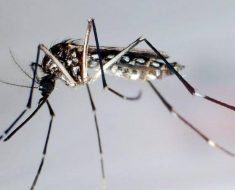More than 200,000 people in Germany are affected by Parkinson’s disease – add this to the early stages, in fact there are about 400,000. About 13,000 each year. Especially older people are affected by the insidious neurodegenerative disease. Due to the expected demographic development, scientists assume that the number of new cases will increase in the next years. One more reason to dedicate the Affected a day about Parkinson’s talked about, discussed and-most importantly-informed. 11. April world create, each year, a greater awareness of this disease, he will enlighten and half-truths clean up, as well as current therapeutic approaches.
For the first time, the physician James Parkinson in 1817 described the symptoms of Parkinson’s disease. The disease is not curable. However, if the first symptoms be properly diagnosed, Parkinson’s disease, now so well treated, that the course of the disease is considerably slowed down. The first symptoms usually appear between the ages of 50 and 60 years of age. The information suggests that eight to twelve percent of patients but only around 40 years old or younger.
Not curable, but treatable
At the German center for Neurodegenerative diseases (DZNE) employ scientists for years with Parkinson’s, one of the most common diseases of the nervous system. It is not curable, but according to the head of the research group of Professor Ullrich Wörner “today well treatable”. In the brain of Parkinson patients lack the neurotransmitter dopamine. The result is that the chemical balance is disturbed in our thinking organ. Medicines can carefully restore.
The Bonn scientists are pursuing two approaches
The clinic for neurology at the University hospital of Bonn and the DZNE store on Thursday, the 11. April to an information event at the lecture hall of the DZNE at the Bonn Venusberg (Sigmund-Freud-Strasse 27). Under the title “movement opens perspectives” Affected and interested between 16.30 and 19 at the importance of exercise for Parkinson’s disease patients with the progression of the disease.
However, Professor Wörner and his Team keep track of currently, there are two more approaches to find out which Parkinson’s disease is triggered. For one, you examine in a study of whether the world’s 1650-approved active ingredients in approved drugs, about their intended effect, the amount of a certain Protein, the researchers with the disease. In addition, the physicians deal with the role of intestinal bacteria. “The composition of which seems to be suffering from Parkinson’s disease to distinguish between patients and healthy people,” says Wörner and hopes to be able to in the long term, a diagnostic procedure to build up. The major research goal must be to make the final trigger find, because if you do not know where the disease came from, could you run bad prevention, says Wörner.
Nicotine reduces Parkinson’s risk
Not a panacea, but an Option to reduce the risk of a disease, according to Wörner, a conscious life-style with a vegetable-rich, the “Mediterranean” diet and exercise. Here plays, and this is quite surprising, nicotine is an interesting role. Because not only in tobacco leaves, but also in peppers and Pepperoni contained Alkaloid, reduces Parkinson’s risk. Numerous studies have shown, therefore, that “Smoking is the strongest protective factor against Parkinson’s disease”. For smokers, and also the evidence of a scientific studies, some of the other health risks.

Sources: Bonner General-Anzeiger





